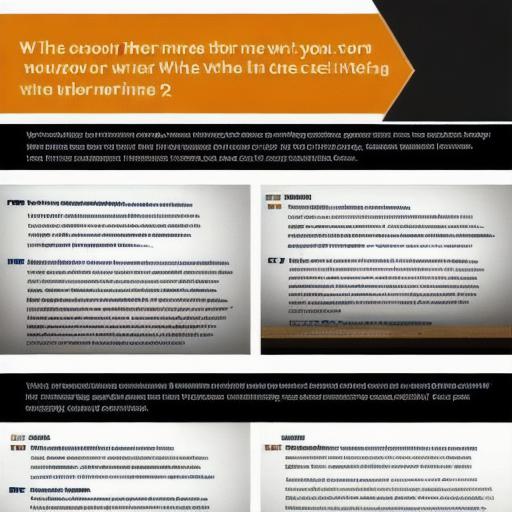Outbound marketing is the practice of actively reaching out to potential customers through various channels such as email, phone calls, social media, and advertising. In today’s digital age, outbound marketing has become more important than ever before, as it enables businesses to connect with their target audience and drive conversions. However, finding the most effective outbound marketing tools can be challenging, especially for small businesses that may not have a large budget or resources.
In this guide, we will explore some of the most effective outbound marketing tools for reaching new customers, along with their features, benefits, and drawbacks. We will also provide tips on how to use these tools to create a successful outbound marketing strategy that drives results.
1. Email Marketing
Email marketing is one of the oldest and most effective outbound marketing tools. With email marketing, businesses can send targeted messages directly to their customers and prospects, promoting products or services, and building relationships with them. Here are some of the benefits of using email marketing as an outbound marketing tool:
- Cost-effective: Email marketing is a cost-effective way to reach potential customers. It requires only a small investment in terms of time and resources.
- Personalized communication: With email marketing, businesses can personalize their messages to their target audience, making them more engaging and relevant.
- Targeted marketing: Email marketing allows businesses to segment their audience based on various criteria such as age, gender, interests, and location. This enables them to send targeted messages to specific groups of customers, increasing the chances of success.
- High ROI: Email marketing can generate high returns on investment (ROI) when executed effectively. According to a study by Campaign Monitor, email marketing generates an average return on investment of $42 for every dollar spent.
However, there are also some drawbacks to using email marketing as an outbound marketing tool. Some of these include:
- Deliverability issues: Spam filters can prevent emails from reaching inboxes, which can lead to low open rates and engagement.

- Time-consuming: Creating and sending personalized emails can be time-consuming, especially for businesses with a large email list.
- Overuse of spammy tactics: If businesses use spammy tactics such as buying email lists or using misleading subject lines, they may damage their brand reputation and lead to legal action.
To overcome these challenges, businesses can follow some best practices for email marketing, including:
- Building a high-quality email list: This involves obtaining consent from subscribers and regularly cleaning and updating the list.
- Segmenting the audience: This involves dividing the email list into smaller groups based on various criteria such as demographics or behavior.
- Creating engaging content: This involves crafting personalized messages that are relevant and valuable to the target audience.
- Measuring results: This involves tracking open rates, click-through rates, and conversion rates to optimize campaigns for better results.
2. Cold Calling
Cold calling is another effective outbound marketing tool that involves reaching out to potential customers over the phone. Here are some of the benefits of using cold calling as an outbound marketing tool:
- Immediate feedback: Cold calling allows businesses to get immediate feedback from their prospects, which can help them refine their pitch and improve their chances of success.
- Personalized communication: Cold calling allows businesses to have a one-on-one conversation with their prospects, enabling them to build a personal relationship with them.
- Time-sensitive opportunities: Cold calling can be particularly effective in time-sensitive situations such as responding to a new customer’s request or following up on a lead that may expire soon.
However, there are also some drawbacks to using cold calling as an outbound marketing tool. Some of these include:
- Rejection: Cold calling can be a challenging and time-consuming process, especially if businesses encounter rejection from potential customers. This can be demotivating and discouraging, leading to low morale and reduced productivity.
- Interruptive: Cold calling can be interruptive, disrupting the customer’s day and causing them to lose focus on their work.
- Lack of personalization: Cold calling may not always allow businesses to personalize their message to each prospect, which can lead to a lower engagement rate and lower conversion rate.
To overcome these challenges, businesses can follow some best practices for cold calling, including:
- Researching prospects: Before making a call, businesses should research the prospect’s company, industry, and pain points to ensure that they have a relevant and valuable pitch.
- Creating a script: Having a clear and concise script can help businesses stay on track during the call and avoid getting sidetracked by irrelevant topics.
- Follow-up: Following up with prospects after a cold call can help businesses build a relationship and increase their chances of success.
- Measuring results: Tracking the number of calls, conversion rates, and customer feedback can help businesses optimize their cold calling campaigns for better results.
3. Social Media Advertising
Social media advertising is a relatively new outbound marketing tool that involves placing ads on social media platforms such as Facebook, Instagram, LinkedIn, and Twitter. Here are some of the benefits of using social media advertising as an outbound marketing tool:

- Targeted reach: Social media advertising allows businesses to target their ads to specific audiences based on various criteria such as demographics, interests, behavior, and location. This enables businesses to reach potential customers who are most likely to be interested in their products or services.
- Cost-effective: Social media advertising can be cost-effective, especially for small businesses that may not have a large budget. The cost per click (CPC) for social media ads is typically low, making it an affordable way to reach potential customers.
- Measurable results: Social media advertising provides measurable results through analytics tools such as Facebook Ads Manager or Twitter Analytics. This enables businesses to track the performance of their ads and optimize them for better results.
- Scalability: Social media advertising allows businesses to scale their campaigns quickly, allowing them to reach a large audience in a short amount of time.
However, there are also some drawbacks to using social media advertising as an outbound marketing tool. Some of these include:
- Ad fatigue: Social media users may become immune to ads, leading to low engagement rates and reduced conversion rates.
- Targeting issues: If businesses target the wrong audience with their ads, they may reach irrelevant prospects or waste resources on ineffective campaigns.
- Competition: Social media advertising can be competitive, especially for businesses operating in highly competitive industries. This can lead to higher costs per click and lower engagement rates.
To overcome these challenges, businesses can follow some best practices for social media advertising, including:
- Defining targeting criteria: Businesses should define clear targeting criteria based on various factors such as demographics, interests, behavior, and location to ensure that their ads reach the right audience.
- Creating engaging content: Social media users are more likely to engage with content that is relevant, valuable, and entertaining. Therefore, businesses should create engaging content that resonates with their target audience.
- Testing and optimizing campaigns: Businesses should test different ad formats, targeting options, and calls-to-action (CTAs) to optimize their campaigns for better results.
- Measuring ROI: Tracking the return on investment (ROI) of social media advertising campaigns can help businesses determine the effectiveness of their ad spend and adjust their budget accordingly.
4. Email Marketing
Email marketing is another effective outbound marketing tool that involves sending promotional emails to a list of subscribers. Here are some of the benefits of using email marketing as an outbound marketing tool:
- Cost-effective: Email marketing can be cost-effective, especially for small businesses that may not have a large budget. The cost per impression (CPM) for email campaigns is typically low, making it an affordable way to reach potential customers.
- Targeted reach: Email marketing allows businesses to target their emails to specific audiences based on various criteria such as demographics, interests, behavior, and location. This enables businesses to reach potential customers who are most likely to be interested in their products or services.
- Personalized communication: Email marketing allows businesses to personalize their message to each subscriber, enabling them to build a relationship with them and increase engagement rates.
- Scalability: Email marketing allows businesses to scale their campaigns quickly, allowing them to reach a large audience in a short amount of time.
However, there are also some drawbacks to using email marketing as an outbound marketing tool. Some of these include:
- Spam filters: Many email providers use spam filters that can block or send emails to the spam folder, reducing the chances of reaching potential customers.
- Unsubscribes: Subscribers may unsubscribe from email lists if they receive too many irrelevant or annoying messages, leading to a reduced list size and lower engagement rates.
- Competition: Email marketing can be competitive, especially for businesses operating in highly competitive industries. This can lead to higher open rates and click-through rates but also increased unsubscribes and bounce rates.
To overcome these challenges, businesses can follow some best practices for email marketing, including:
- Building a quality list: Businesses should focus on building a quality list of subscribers by offering valuable content or incentives in exchange for their email address. This will ensure that the list is more likely to engage with the emails and reduce the chances of unsubscribes.
- Creating engaging content: Email users are more likely to engage with content that is relevant, valuable, and entertaining. Therefore, businesses should create engaging content that resonates with their subscribers.
- Testing and optimizing campaigns: Businesses should test different email formats, subject lines, calls-to-action (CTAs), and sending frequencies to optimize their campaigns for better results.
- Measuring ROI: Tracking the return on investment (ROI) of email marketing campaigns can help businesses determine the effectiveness of their email spend and adjust their budget accordingly.
Conclusion
Outbound marketing is a powerful tool that can help businesses reach potential customers and generate leads. However, it requires careful planning, execution, and monitoring to achieve the desired results. By following best practices for each outbound marketing tool, businesses can optimize their campaigns for better engagement rates, higher conversion rates, and increased ROI. Therefore, businesses should invest in a mix of outbound marketing tools to reach a wide audience and increase their chances of success.




